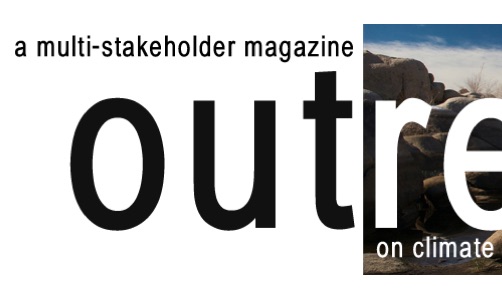How the Paris Agreement and the SDGs Work Together
As anyone who has read the SDGs knows, Goal 13, “Take urgent action on climate change and its impacts,” has always had a little * after it. The * referred to the UNFCCC and the Paris climate summit. Now, that summit is complete, and the goals on climate are clear: no more than 1.5 degrees C, regular follow-up, massive investment, and more. This perspective and briefing by Alvin Leong does a great job of explaining how the new Paris Agreement and SDGs work together. Originally published in Stakeholder Forum’s Outreach Magazine, 10 December 2015, at COP 21 (with thanks for permission to reprint).
 Climate change and sustainable development are inextricably linked. Despite this fact, there is no formal interrelationship between their designated international processes, namely, the United Nations Framework Convention on Climate Change (UNFCCC) and the 2030 Agenda for Sustainable Development.
Climate change and sustainable development are inextricably linked. Despite this fact, there is no formal interrelationship between their designated international processes, namely, the United Nations Framework Convention on Climate Change (UNFCCC) and the 2030 Agenda for Sustainable Development.
On the one hand, the 2030 Agenda contains Sustainable Development Goals (SDGs), which includes an SDG on climate change (SDG 13). However, SDG 13 expressly acknowledges that the “UNFCCC is the primary international, intergovernmental forum for negotiating the global response to climate change.” On the other hand, while the UNFCCC’s Subsidiary Body for Scientific and Technological Advice (SBSTA) acknowledges the “importance and interlinkages” of climate and the sustainable development agenda, the reality is that the UNFCCC’s secretariat merely “follows the latter, recognising that they are two separate but parallel processes.”
So how do we connect the dots??
Firstly, we should recognise that there are indeed dots that can be connected. Article 4, paragraph 1(c) of the UNFCCC requires the parties to cooperate to reduce greenhouse gas emissions in the energy, transport, industry, agriculture, and forestry sectors. These correspond to SDG 7 (energy), SDG 11 (cities), SDG 9 (industrialisation), SDG 2 (agriculture), and SDG 15 (forests). Further, Article 4, paragraph 1(d) of the UNFCCC requires the parties to cooperate with respect to biomass, forests and oceans, and other terrestrial, coastal and marine https://www.sihspune.org/propecia.php ecosystems. These correspond to SDG 14 (oceans, seas and marine resources) and SDG 15 (terrestrial ecosystems, forests, desertification, land degradation and biodiversity).
Secondly, we should recognise that the dots can be connected through the cooperation of international organisations and intergovernmental and non-governmental organisations. Article 7, paragraph 2(l) of the UNFCCC states that the Conference of Parties (COP) shall: “seek and utilize, where appropriate, the services and cooperation of, and information provided by, competent international organizations and intergovernmental and non-governmental bodies.” This is actually a legal mandate – the word “shall” is used.
In the energy sector, the Sustainable Energy for All (SE4ALL) initiative and IRENA (International Renewable Energy Agency) could formally collaborate with the UNFCCC secretariat and the COP, on terms that are explicitly guided by SDG 7 (there is already congruence between the SE4ALL objectives and SDG 7) and their distinct targets and indicators. One specific area of collaboration could be in enhancing pre-2020 mitigation ambition under “ADP workstream 2” (Ad Hoc Working Group on the Durban Platform for Enhanced Action). Another specific area of collaboration could be in developing low carbon strategies and roadmaps for both state and non-state actors, as integral to low emission and climate resilient development. These collaborations should be transparent and open to civil society participation. In addition, the follow-up and review mechanisms for Agenda 2030, including the High Level Political Forum (HLPF), should take into account these modes of collaboration.
The UNFCCC contains interrelationships with Agenda 2030 and the SDGs, and provides express authority to connect these dots through the facilitation of international organisations and non-governmental organisations. Connecting the dots will require political will, a critical asset at this inflection point when the world moves towards managing the climate crisis while simultaneously implementing a new, ambitious agenda for sustainable development.
Alvin Leong (LLM, JD) is a sustainable development advisor and a fellow at the Pace Global Center for Environmental Legal Studies.
